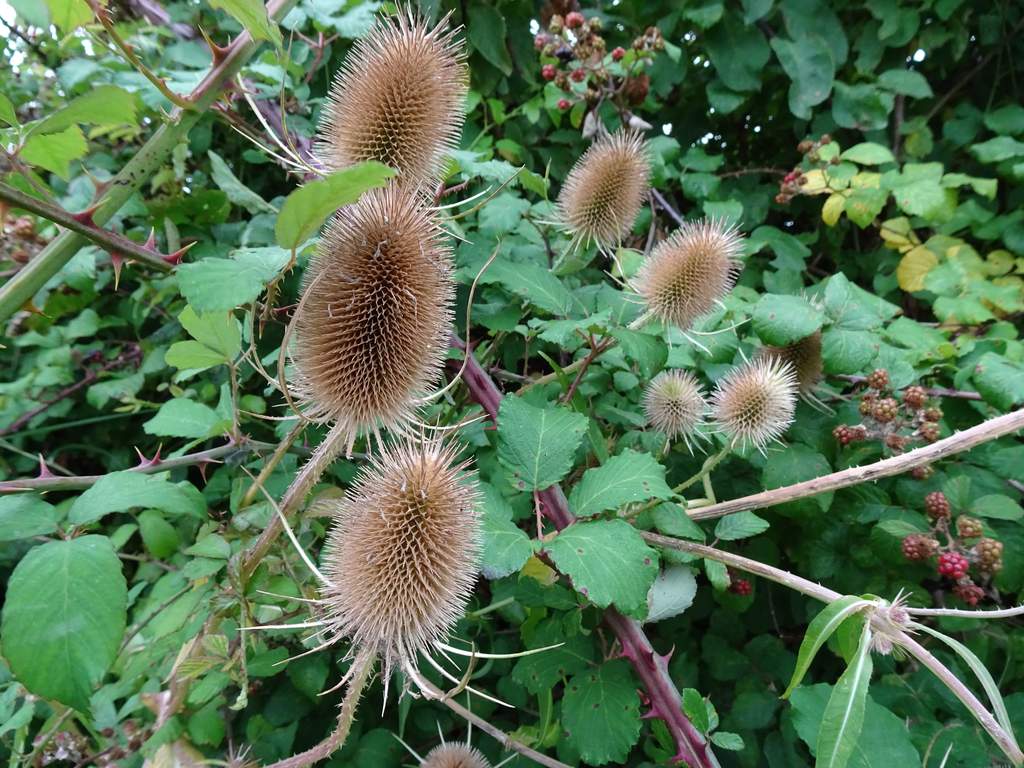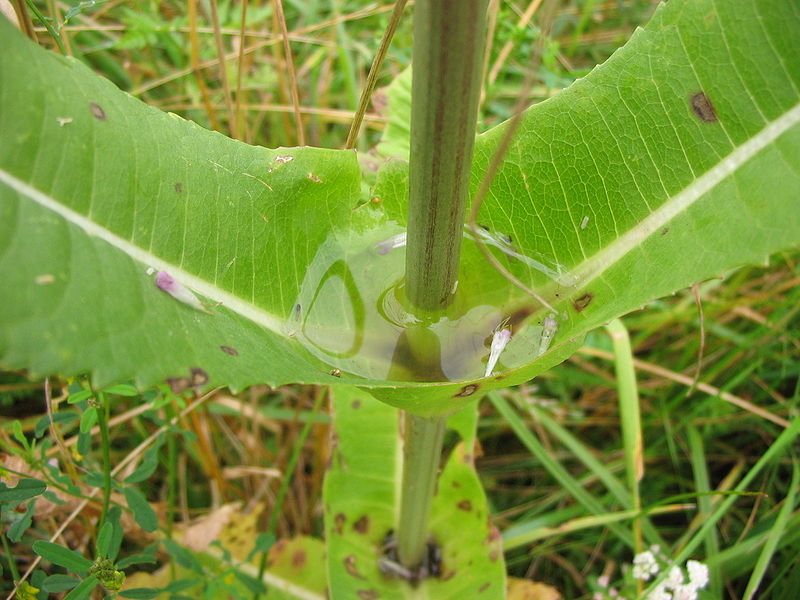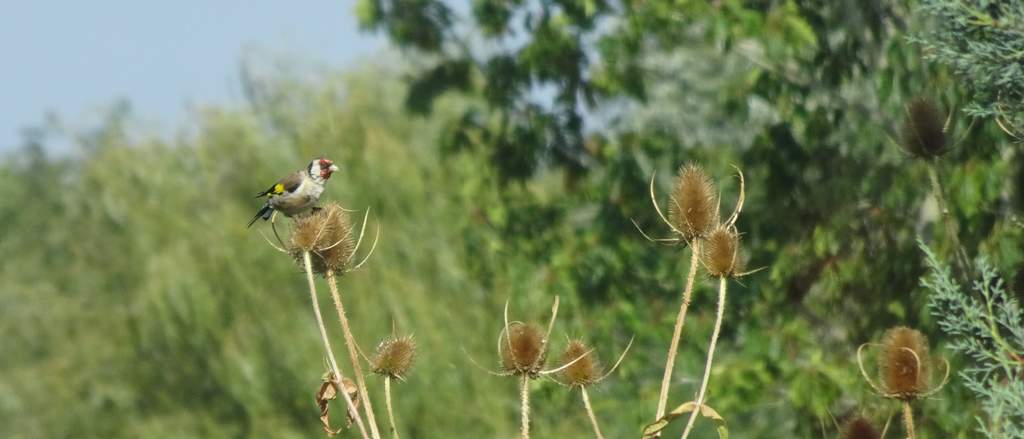Common teasel (Dipsacus fullonum) is a striking wildflower best known for its statuesque seed heads that can be seen during the autumn and winter months.
Whilst it is one of our most distinctive wildflowers it also has an interesting working past and a mysterious dark side.

Lifecycle
Teasel is biennial meaning that it has a two-year life cycle. In its first year, the young plant grows low to the ground in a rosette of deep green leaves. In year two a tall stem grows upwards to some 6 feet tall topped by majestic egg-shaped seed heads.

Teasel is spikey all over and is actually a member of the honeysuckle family. In the summer it develops rings of delicate, tightly packed purple flowers that are loved by bees.

Not Just a Pretty Seed Head
During the 19th century, the dried heads of teasel were used by cloth makers for brushing cloth to raise the soft nap of the fabric and to comb wool ready for spinning. It was this act of teasing up the fibers of these textiles that gave the plant its common name of teasel. This link to the textile industry also led to the other common name for teasel of ‘brushes and combs’.
Mysterious and Dangerous
Like many of our native wildflowers teasel is subject to mysterious tales of folklore, not least for its habit of collecting rainwater.
Due to the structure of the leaves where they meet the plant stem, teasel will collect and store water in mini reservoirs. In Irish folklore, this water is said to be the drinking fountain of fairies whilst it was also thought that the fluid contained magical powers of restoration.

This water certainly doesn’t provide any powers of restoration for the small insects that frequently drown in these small pools of rainwater.
Some studies have suggested that these pockets of water help prevent insects that land on the leaves from climbing up to attack the seed heads. Other research suggests that the insects that perish actually provide nutrition for the plant. One particular study has shown an increase in seed production for teasel plants that were fed a steady stream of insect victims. For more information on this see this article from the Public Library of Science: https://journals.plos.org/plosone/article?id=10.1371/journal.pone.0017935
Reasons to Love Teasel
Teasel provides a spectacle all year round, from its rich green leaves in the spring to its purple flowers in the summer and its striking winter seed heads. But it doesn’t just look spectacular, it is also an important source of nectar for insects in the summer and a vital source of food for birds in the winter.

Teasel seeds are loved by goldfinches and teasel is often grown in wildlife gardens to encourage these attractive birds to visit.
So, although they may make an eye-catching Christmas decoration, put your silver spray paint away, and leave them where they stand, the seeds they contain will be a vital source of nourishment for birds during the cold winter months.


